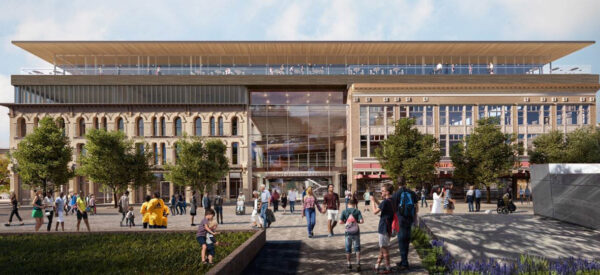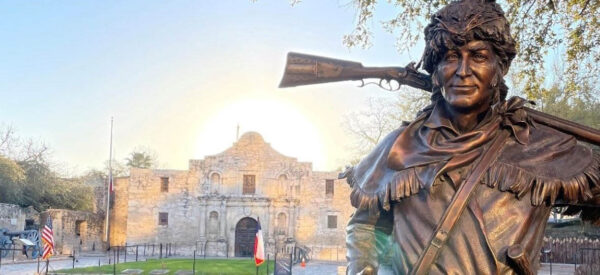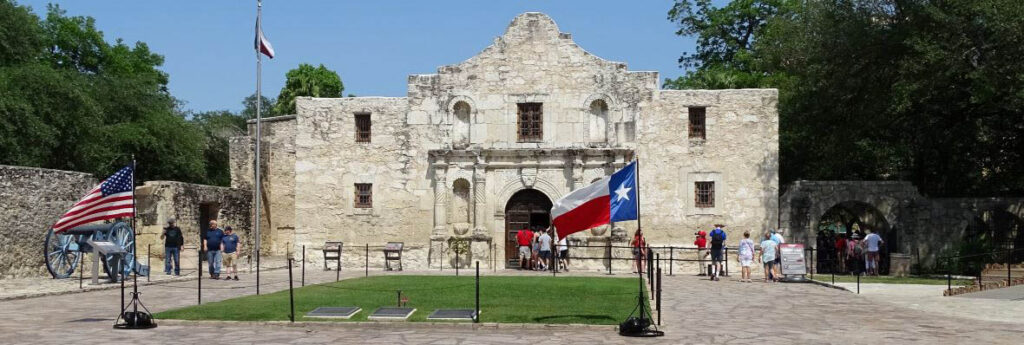It’s the most iconic landmark in Texas, but for many, initial impressions prompt the question: “Is that it?” After all, the historic site – famed site of the Battle of The Alamo in 1836, where Davy Crockett and others lost their lives fighting in the Texas Revolution – is squeezed into a downtown square in San Antonio that lacks the epic scale of most other national moments in the US.
But that’s changing.
In 2015, discussions began on how to preserve and improve the UNESCO site (the only one in Texas and one of two urban UNESCO sites in the US), leading to what became known as “The Alamo Plan.”
Alamo officials admit that visitors often wondered “what else can we do?” at the site, which is the No. 1 tourist attraction in Texas with 1.6 million patrons a year.
Cue the plan – a US$400-million template designed to not only help preserve the 300-year-old landmark, but “restore reverence and dignity to one of the most historic sites in Texas.”
Indeed, surrounded by eateries, bars and tourist boutiques, a Ripley’s haunted house and a wax museum, The Alamo Plaza has traditionally offered a whiff of Niagara Falls more so than a cherished Texas landmark that is “remembered” for its role in the revolution and ultimate independence of the Republic of Texas from Mexico.
Jonathan Huhn, Director of Communications and Community Outreach for Alamo Trust, Inc. says it’s a “question of perceptions,” and the Plan will help mitigate disappointed ones by truly creating a “sense of arrival” for the site, which currently seems to simply pop up out of nowhere in the centre of the city.
There will be a park/green space and promenade, and the approaching road closed to vehicular traffic.
And most importantly, the tourist shops facing the Plaza and The Alamo Church will give way to a world-class visitor centre and museum that will be the “crown jewel” of the restoration when it opens in 2026 or 2027.

The visitor centre will feature a 4D theatre, special event space, rooftop restaurant, retail space, and will be home to the entire Phil (the singer – and who- knew Alamo hobbyist) Collins Texana Collection of Alamo memorabilia, which recently went on display in a new building on The Alamo site.
The museum, meanwhile, will tell the full 300-year history of The Alamo through primary interpretive topics including Indigenous Native American groups; Spanish Colonial Settlement; Independence and Revolution; The Battle of the Alamo and its strategic significance; How The Alamo was preserved from ruin to memorial; and the unrelated San Antonio Civil Rights movement in the space where it happened in the Woolworth building.
Despite the future grand plans, developments at the Alamo continue apace today.
Following reunification of The Alamo Church and Long Barrack with the Plaza in 2019, restoration of the sites is progressing as planned, while the 18-Pounder Losoya House Exhibit has been unveiled in the southwest corner of Alamo Plaza along with the Palisade Exhibit, allowing visitors to better understand the original footprint of The Alamo as it was both during the Spanish Mission era, as well as the Battle of 1836.
The Palisade was completed just in time for the closing night gala of the IPW travel trade event in late May, enabling delegates from around the world to be the first to see the exhibit.
Two months earlier, on March 3, the new 2,200-sq.-m. Ralston Family Collections Center opened to the public in the space behind the Church, representing the first new construction on The Alamo grounds since the 1950s and providing five times more exhibition space than was previously available.
The Center houses all of The Alamo artifacts, Alamo Collection, and Phil Collins Collection under one roof and will serve as a museum until the new facility is built.
All told, Huhn says the “transformative endeavor” to remake The Alamo – “the last US national landmark to get it’s due” – will play a pivotal role in better telling the complete 300-year history of The Alamo, which is still free to visitors, like never before.
“There’s a huge story to tell,” says Huhn. And The Alamo plans to tell it.


